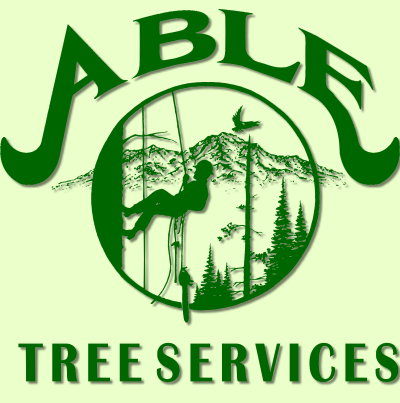Nova on Trees
A Sucker-Punched New Year
Our holiday festivities were just a fleeting memory by January 3rd, 2008, when power-packed storms brought screaming winds, heavy snow, and drenching rain that drowned out the hopeful wishes of launching a happy new year for many. From Sacramento to the Oregon border, trees crashed onto homes, vehicles, and other valuable property. Incredibly, no lives were lost in this storm series, although several people were injured, some seriously. Roofs and roof sections were stripped off buildings like banana peels.
Hundreds of thousands of people suffered electric power outages and shivered in their cold homes, many wishing they could trade back their electric furnaces and cook stoves for that sure-fire airtight wood stove that was sold in ayard sale a few summers before. Those suffering souls, some turned complacent by the recent years of mild winters, were simply sucker-punched by Old Man Winter’s wily ways.
By 7 a.m. on January 3rd, all of our tree service phone lines were ringing as incessantly as those of the San Bernardino County Fire Department during a Santa Ana wildfire siege. Many frantic callers had grim reports: trees down on roofs with their homes taking in water; trees about to uproot and crash onto buildings; trees wind-felled across driveways, eliminating vehicle access. One person was trapped and unable to get out when a tree fell across the doorway.
Fire Departments, tree services, utility companies, insurance agencies, snow-plow contractors and many other service providers in the North State were barraged with more calls than hot hunting grounds during opening morning of wild turkey spring season. For our tree services, triage tactics were employed as a strategy of coping during the first three days of the storm siege. Our biggest challenge was finding property addresses not prominently displayed and visible from the road using large reflective bold numbers. The first priority was to rig up trees that posed an immediate danger to life and property and get them safely to the ground. After that, we worked on those trees that were already down on roofs, cars, and driveways. Only by the end of the second week did we even begin layer-three work: bucking up the trees that were strewn across outbuildings, yards, and fences.
How many of us were prepared when that monstrous storm system slammed Northern California the second night into the New Year? I think we all wish we had been more ready!
Saturday morning of January 19th was our tree-service crews’ first day in over two weeks without climbing onto storm-damaged tree work. Our weary but undefeated crews met for a joint staff and safety meeting. During the debriefing segment, many hazards and close calls were shared and evaluated, and solutions were suggested. Common denominators were deduced that had resulted in many tree failures. Our arborists estimated over 40% of hazard trees involved were either dead trees, or trees with canopies that were at least 50% dead or dying. Too many homeowners simply trusted those dead or declining trees to safely stand firm through yet another winter. Either from ignorance, indifference, arrogance or the quiet desperation of economic hard times, too many folks hoped a happy new year would shine warm blessings on them all for the 364 new days ahead. Yet by January 5th, many of those same good people probably felt hammered harder than heavyweight champ Sonny Liston the morning after his surprise single slugfest loss against a young-blooded and fast-dancing Muhammad Ali, then known as Cassius Clay. Old Man Winter can hit a lot sooner, swifter, stronger and with more surprise than many intelligent people care to give him credit for.
What’s the best way to fight a clean fight, go all rounds with gusto, keep our guard up, and win with a decisive victory? Preparation, preventive action, and professional performance! A tree consultation, utilizing a well-experienced certified arborist is an inexpensive investment compared to a tree condemnation of a once-stately but now treacherous storm-damaged hazard tree that could involve considerable cash or, far worse, cost someone’s life.
Epilogue:
Two more hard-hitting storm series struck upstate California on the 4th and 5th weeks of the new year. Several storm-damaged trees worked by Able Tree Services involved trees evaluated by Certified Arborist Dale Nova six months to three years prior with prescriptions suggested for positive tree care. In some cases, a few trees were recommended for removal due to safety. In almost all cases, the costs would have been much less than dealing with these compromised trees after they became winter weather hazards.
Who said an ounce of prevention is far less expensive than a pound of cure? Was that my accountant?
Dale Nova is a certified arborist, urban forester, and co-owner of Able Tree
Services.
|
|
||
